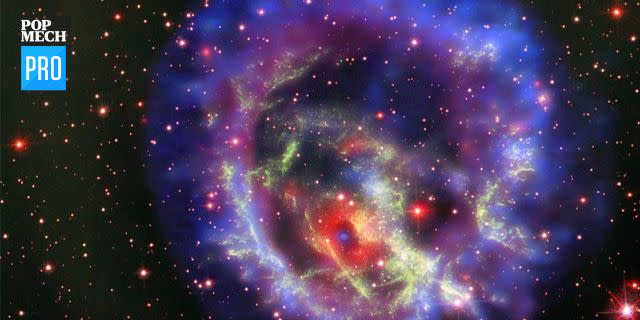A Neutron Star Might Have Just Collided with a Black Hole

Scientists at the Hawaii-based Keck Observatory believe they might have an exciting find on their hands, something like a galactic playoff game: nebula star vs. black hole. The black hole wins, but capturing the act of destruction, as they believe they have, would be a type of collision never seen before.
"It's like the night before Christmas," astronomer Ryan Foley of the University of California, Santa Cruz tells ScienceAlert. "I'm just waiting to see what's under the tree."
The event has been named S190814bv and was detected by the LIGO (Laser Interferometer Gravitational-Wave Observatory) and Virgo interferometers on August 14. Interferometers merge two or more sources of light to develop what's known as an interference pattern. These interference patterns can subsequently be measured and analyzed.
In an email on NASA's website, LIGO scientist Geoffrey Mo says that "there is strong evidence" of the neutron star-black hole collision. How strong? He feels over 99 percent sure, according to his email.
The discovery is an outgrowth of the still-burgeoning field of gravitational wave detection, which began in 2016, when LIGO scientists announced that for the first time they had detected gravitational waves from a black hole. These gravitational waves are caused by the black hole's violent collisions with other bodies.
Neutron stars and black holes share common origins: They're both the remains of a dead star with densities almost beyond imagination. If the discovery holds, it has the possibility to prove the reality of a space phenomenon that has, until now, been seen only in the imagination: a binary system, in which two bodies are close enough that their gravitational attraction causes them to orbit each other around a center of mass known as a barycenter.
If it was a binary system, its ending was violent. The gravitational waves detected by the collision of the two bodies paint a picture to scientists through their velocity and acceleration.
"From the gravitational wave signal, one can get information about the spins of the individual objects and their orientation compared with the axis to the orbit," physicist Peter Veitch of the University of Adelaide in Australia and OzGrav (the Australian branch of the LIGO Scientific Collaboration) tells ScienceAlert.
This group is "looking to see whether the rotational spin of the individual objects are aligned with each other, which might suggest that they were initially in a binary system," he says. "Whereas if one compact object was captured by another as galaxies merged, for example, then you might expect these objects have different spins pointing in different directions."
The discovery allows for further potential study of neutron stars, the densest stars known to exist. If scientists could observe one ripping apart, they could hypothetically study its insides as well. Their next task is detecting the star's former location through a search for electromagnetic radiation.
The discoveries come amidst controversy regarding another potential observatory near the Keck known as the Thirty Meter Telescope (TMT) on Mauna Kea, a sacred religious site in Hawaiian culture. The Keck was among the focuses of protestors attempting to halt construction of the TMT, which resulted in a 4-week shutdown of the existing observatories on Mauna Kea. But last week, protesters and authorities brokered a deal to allow the Keck to re-open.
Source: ScienceAlert
You Might Also Like

